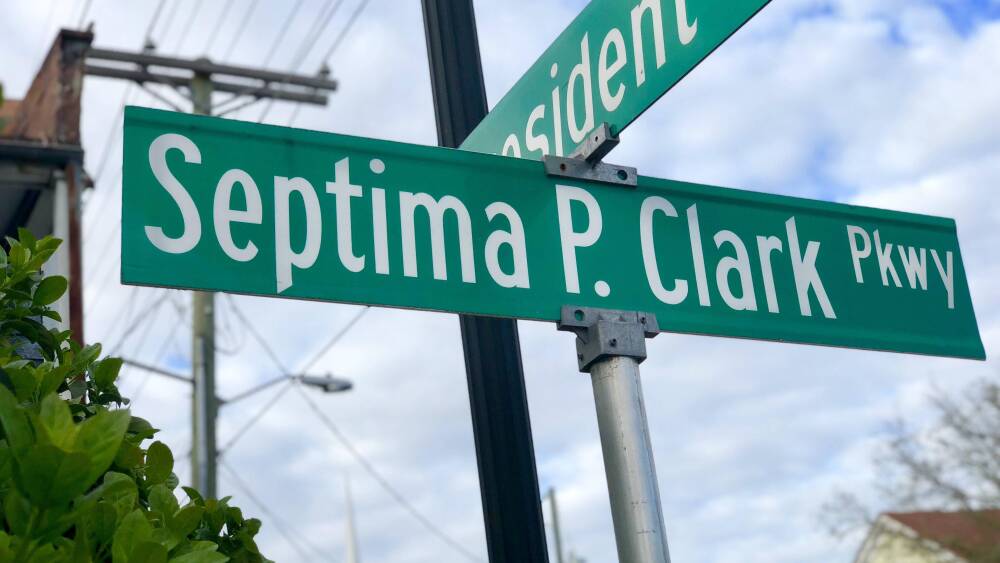Ever wondered where some of Charleston’s street names originate? Sure, some are a little obvious (it doesn’t take a historian to deduce that King Street is named after, well, a king). Others, though, aren’t so straightforward.
To make sure your knowledge of these Lowcountry street names isn’t as jumbled as your GPS device’s pronunciation of them (Oh really, Siri? You’re leading me to Boo-Fan Street?), we’ve put together a quick guide to what’s in a street name.
We’re gonna rock down to [Rutledge] Avenue… 🎶
Ashley Avenue was originally named Lynch Street, as part of Harleston Village’s (originally a suburb of downtown) street plan in 1770. Its name changed several times before it officially became Ashley in 1897. Why is it, along with so many other landmarks + places in Charleston, called Ashley you ask? Likely after Anthony Ashley Cooper, the 1st Earl of Shaftesbury + one of eight Lords Proprietors of the Province of Carolina. It was Ashley Cooper who established the original street plan of Charleston’s peninsula – so both the Ashley + the Cooper rivers were named in his honor. Oddly enough, Ashley Cooper never actually stepped foot in Charleston – or any part of the New World, for that matter.
Ashley Phosphate Road is named after an industry which used to be prominent within the Ashley River Region, especially after the Civil War: phosphate mining.
Beaufain Street gets its name from French Huguenot + prominent Charlestonian Hector Berenger de Beaufain. After moving to South Carolina in 1735, Beaufain became one of the founders of the Charleston Library Society, and served as a Collector of Customs for 24 years. Beaufain stayed here until his death in 1766 + is buried at St. Philip’s Church.
Calhoun Street is (maybe infamously) named after former U.S. Vice President John C. Calhoun. The designation has stirred controversy in recent years – particularly in 2015, when, in the wake of the racially-motivated Emanuel AME shooting, there was a nationwide call to rename the street, on which the church resides, to something other than the surname of a man known for being pro-slavery. Eventually, the block on which Emanuel AME is located was renamed the “Mother Emanuel Way Historic District,” with the rest of the street maintaining its original title.
Calhoun’s presence in Charleston has continued to draw controversy as recently last year, when an editorial appearing in the Chicago Tribune questioned the continued existence of the Calhoun statue in Marion Square. The City Council debate to update even just the plaque below the monument is still up in the air.
Church Street is not actually named for St. Philip’s Church, but either for the French Huguenot Church or the Baptist Meeting House.
Coleman Boulevard in Mount Pleasant is named for the former mayor of the town, Francis F. Coleman, who was in office from 1946 to 1960.
Johnnie Dodds Boulevard is named for another one of Mount Pleasant’s former mayors, Johnnie Dodds, who served from 1976-84.
Huger Street, which is pronounced YOU-GEE, is named after Isaac Huger – brigadier general + veteran of the Cherokee War and the American Revolution. Born in 1742 (some say 1743), he also served in the S.C. Senate, the House of Representatives, and the First Provincial Congress.

King Street | Photo by @jenwinter11
You may know King Street is named after a king, but you may not realize the king in question is King Charles II of England. He’s the guy who put the Lords Proprietor in charge of the Carolina territory – who then went on to establish Charles Town (later called Charleston) as its first settlement. In other words, the city, along with its most popular street, are both named in his honor.
The Mark Clark Expressway (a.k.a. I-526) is named for Mark Clark, a former four-star Army General who served as president of the Citadel from 1954-65 + retired in Charleston. Clark is buried on the Citadel’s campus, right next to Mark Clark Hall.
Maybank Highway is named for former Charleston mayor, S.C. governor, and U.S. senator Burnet Rhett Maybank. You can thank Maybank for our W.P.A. buildings, which he worked to get federal funding for under the New Deal, for restoring the Dock Street Theatre and for helping to build South Carolina’s largest New Deal initiative – the Santee Cooper hydroelectric project. The project created two lakes, built hydroelectric dams + power plants, and, of course, established the Santee Cooper electric and water utility company.
The origin of the name Remount Road dates back to World War I, when the federal government kept tens of thousands of horses + mules in North Charleston, in case they needed to be shipped overseas to aid in battle. They were corralled at what was called the Animal Embarkation Depot 302, otherwise known as the Army Quartermaster Corps Remount Division (remount here meaning a ‘fresh horse’).
Rutledge Avenue gets its name from the Rutledge family, who called the Charleston area home. The thoroughfare pays homage in particular to Edward Rutledge, a Revolutionary and, at age 26, a signer of the Declaration of Independence. Really makes me question what I’ve accomplished thus far in my own 26 years.
Sam Rittenberg Boulevard in West Ashley is named after Samuel Oscar Rittenberg, who represented Charleston County in the South Carolina House of Representatives for five terms in the 1910s + 1920s.
Septima P. Clark Parkway was named in honor of civil rights icon Septima P. Clark. Commonly referred to as the “Mother of the Movement,” Clark was born + raised in South Carolina, studied to become a teacher, and established her legacy by creating more than 800 Citizen Schools – which educated + empowered black people by teaching skills ranging from basic literacy to how to pay taxes. Read more about her lifelong dedication to civil rights + education here.
Quiz












